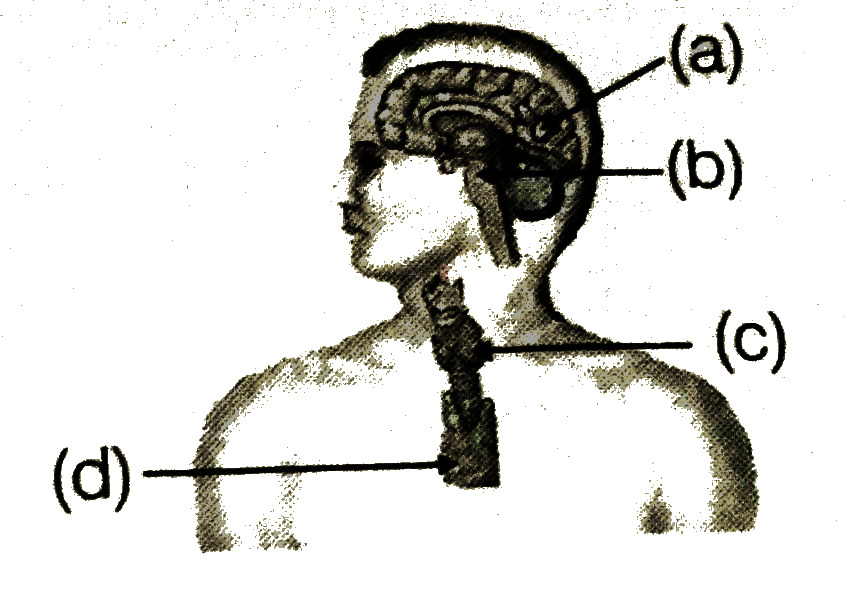Neurohypophysis is not a 'true' endocrine gland because
it is provided with a duct
it only stores and releases hormones
it is under the regulation of hypothalamus
it secretes enzymes
The correct Answer is:B
Step-by-Step Solution:
1. Understanding Neurohypophysis: The neurohypophysis, also known as the posterior pituitary, is one of the two parts of the pituitary gland. The other part is the adenohypophysis (anterior pituitary).
2. Hormones Secreted: The neurohypophysis is responsible for the storage and release of two important hormones: oxytocin and vasopressin (also known as antidiuretic hormone or ADH). However, it does not produce these hormones.
3. Source of Hormones: The hormones released by the neurohypophysis are actually synthesized in the hypothalamus. The neurohypophysis acts merely as a storage site for these hormones.
4. Neural Regulation: The neurohypophysis is under the direct neural control of the hypothalamus. This means that the hypothalamus sends signals to the neurohypophysis to release the stored hormones.
5. Lack of Ducts: Unlike true endocrine glands, which typically have a duct system to transport their secretions, the neurohypophysis does not have ducts. It simply releases hormones directly into the bloodstream.
6. Conclusion: Because the neurohypophysis does not produce hormones, lacks ducts, and is under the direct control of the hypothalamus, it is not considered a 'true' endocrine gland.
Final Answer: Neurohypophysis is not a 'true' endocrine gland because it does not produce hormones (it only stores and releases them), it lacks ducts, and it is under the direct neural regulation of the hypothalamus.
---
Similar Questions
Endocrine glands
View SolutionEndocrine glands
View SolutionThe posterior pituitary gland is not a 'true' endocrine gland because
View SolutionLabel the endocrine gland in figure

View SolutionLargest endocrine gland in humans
View SolutionThe largest endocrine gland in human is
View SolutionExocrine and Endocrine glands
View SolutionWhich of the following is known as master endocrine gland
View SolutionWhat is the function of endocrine gland?
View SolutionWhich of the following is not an endocrine gland ?
View Solution
